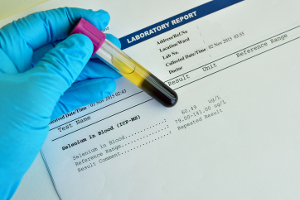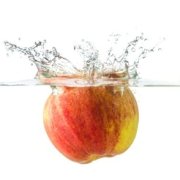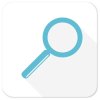Low selenium levels in the soil are linked to life-threatening reactions to COVID-19
 An international science team from the University of Surrey in England has found a link between low selenium levels in the soil and the risk od COVID-19 infections becoming lethal. Professor Margaret Rayman, who headed the study, has spent decades studying the global lack of selenium that is known to impair the ability of the immune system to tackle virus infections and new epidemics. The farmlands in large parts of the world, including Europe and China, are low in selenium, and it is vital to have more focus on this essential nutrient.
An international science team from the University of Surrey in England has found a link between low selenium levels in the soil and the risk od COVID-19 infections becoming lethal. Professor Margaret Rayman, who headed the study, has spent decades studying the global lack of selenium that is known to impair the ability of the immune system to tackle virus infections and new epidemics. The farmlands in large parts of the world, including Europe and China, are low in selenium, and it is vital to have more focus on this essential nutrient.
Selenium is found in fish, eggs, and grains among other things, but there are different factors that influence how much selenium each person gets such as eating habits, geography, and levels of the nutrient in the soil. Depending on where you live, the difference in selenium intake may vary by several hundred percent. Selenium is essential for our health and for our immune system’s ability to combat virus infections. Studies have shown that an HIV-infection is more likely to develop into full-blown AIDS in selenium-deficient patients, and they also have a 20 percent increased risk of dying of their disease if they lack selenium. In China, the soil has varying levels of selenium depending on which region you look at. The selenium content in the soil in the Keshan province is extremely low, and it was here that scientists in the 1960s discovered a potentially lethal heart disease for the very first time and named it Keshan disease. The disease was caused by a normally harmless virus called the Coxsackie virus, which the immune system is unable to fight if it lacks selenium.
Professor Margaret Rayman, the scientist in charge of the new study, wanted to investigate whether there was a link between the rate and severity of COVID-19 and the selenium-depleted parts of China that run in a belt from the northeast to the southeast. The team of scientists compared soil data and COVID-19 rates in a number of different Chinese provinces and towns and
found that COVID-19 patients had far better odds of recovering in those parts of China that had the most selenium in the soil. In the town Enshi that is located in the Hubei province where people have the highest selenium intake in China, the average cure rate was almost three times higher than for other towns in the same province. By contrast, inhabitants of the Heilongjiang
Province that has the lowest selenium intake in the world had a nearly five times higher average death rate than all other provinces outside of Hubei.
Most convincingly, the team of scientists found that the ability to recover from COVID-19 was significantly linked to the body’s selenium status, which the scientists gauged by analyzing hair samples from a number of participants in 17 towns outside Hubei.
The new study is published in the American Journal of Clinical Nutrition.
|
Selenium strengthens and controls the immune defense in different ways
Selenium supports around 25-30 different selenium-dependent enzymes called selenoproteins that are essential for our energy turnover, immune defense and number of other vital body functions. The relation between the body’s selenium status and its ability to combat COVID-19 is supported by earlier studies that also reveal why selenium is so important for an effective immune response. Selenium is necessary for:
- The innate immune system that fights most germs without us even noticing
- The adaptive (or acquired) immune system that is able to specialize, produce antibodies and generate immunity
- The communication of the immune system and cell division
- The prevention of virus mutations that force the immune system to rebuild immunity
- The formation of powerful antioxidants that protect healthy cells when the immune defense goes into action (prevention of autoimmune attacks)
When infections like COVID-19 and influenza become life-threatening it is not the virus as such that is the problem but the fact that the immune system overreacts with cytokine storm, hyperinflammation, and oxidative stress that can attack and damage healthy tissues. It is of vital importance to have enough protective nutrients like selenium that help the immune defense aim a swift and effective attack at the enemy at the same time as making sure to protect the body’s own tissues.
|
Official recommendations for selenium are not optimal
Selenoprotein P is an essential selenium-containing protein that is also used as a marker of the body’s selenium status. Studies show that the official recommendations for selenium intake (50-70 micrograms) are not adequate for complete saturation of selenoprotein P. In order to obtain full saturation, you need around 100 micrograms of selenium every day.
In the case of an infection, the body’s need for selenium can easily be a lot higher.
Supplements with selenium yeast that contain many different selenium species are preferable, as they are closer to the natural variety of different selenium sources that you get by eating a varied diet.
According to the WHO (World Health Organization), the safe upper intake level for selenium is 400 micrograms daily.
Important: Remember vitamin D, vitamin C, and zinc in the fight against COVID-19 and other virus infectionsIt is not a coincidence that virus infections typically occur during the winter period where people are far more likely to lack vitamin D. We also need vitamin C and zinc to boost our immune defense and counteract oxidative stress |
References:
Zhang J et al. Association between regional selenium status and reported outcome of COVID-19 cases in China. The American Journal of Clinical Nutrition. Apr. 2020
James Ives. Researchers identify link between COVID-19 cure rate and regional selenium status. News Medical Apr 29 2020
Olivia M. Guillan et al. Selenium, Selenoproteins and Viral Infection. Nutrients 2019
Jones GD et al. Selenium deficiency risk predicted to increase under future climate change. Proceedings of the National Academy of Sciences 2017
Lutz Shomburg. Dietary Selenium and Human Health. Nutrients 2017
Hoffmann Peter R et al. The influence of selenium on immune responses. Mol Nutr Food Res.
Arthur John R et al. Selenium in the Immune System. The Journal of Nutrition. 2003.
Beck MA, Levander OA. Host nutritional status and its effect on a viral pathogen. J Infect Dis. 2000.
Cowgill U.M. The distribution of selenium and mortality owing to acquired immune deficiency syndrome in the continental Unites States. Biol Trace Elem 1997.
Search for more information...
- Created on .













 "After about one week of taking the Q10 supplement I could feel a huge difference," says 23-year old Alan Piccini, who has been suffering from extreme fatigue and muscle aches ever since he was a child.
"After about one week of taking the Q10 supplement I could feel a huge difference," says 23-year old Alan Piccini, who has been suffering from extreme fatigue and muscle aches ever since he was a child. “Taking capsules with co-enzyme Q10 has freed me of the severe side effects of my cholesterol lowering medicine,” Mrs Franken explains.
“Taking capsules with co-enzyme Q10 has freed me of the severe side effects of my cholesterol lowering medicine,” Mrs Franken explains.